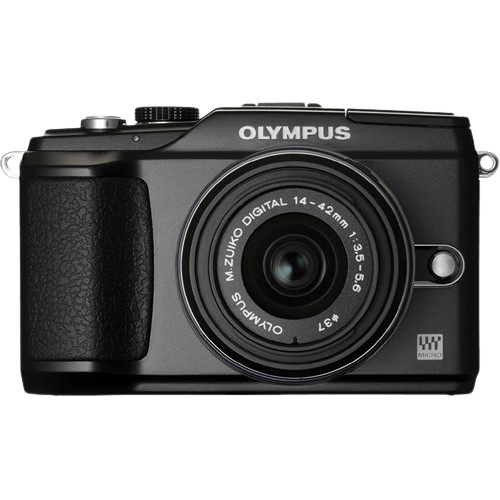Olympus PEN E-PL2 Specs and Scores

The Olympus PEN E-PL2 earns a score of 39/100 for its general specifications. Introduced on January 6, 2011, this mirrorless camera launched at a price of $599. Measuring 114 x 72 x 42mm and weighing 362g (0.80lbs), the E-PL2 has a compact design.
Considering today’s market, the E-PL2’s specifications may not stand out among newer models. However, its size and weight make it a viable option for those seeking a lightweight and portable camera. The E-PL2 remains a decent choice for casual photographers, despite its age and relatively low score.
Olympus PEN E-PL2 Overview and Optics
The Olympus PEN E-PL2 receives a score of 43/100 for its optics. This camera has 12.3 megapixels, a shooting speed of 3, a Live MOS sensor, and a TruePic V processor. Its DXOMARK score for the sensor is 55, signifying decent performance. The E-PL2 features a Micro Four Thirds sensor size and a Micro 4/3 lens mount. Additionally, it includes image stabilization and a 4:3 aspect ratio.
In comparison to other cameras in the market, the E-PL2’s optics may not stand out as top-of-the-line, especially considering the rapid advancements in camera technology. However, for casual photographers or those on a budget, this camera still offers satisfactory performance and capabilities. While it may not be on par with the latest releases, the Olympus PEN E-PL2 can still provide quality images for its users.
Olympus PEN E-PL2 Video Performance
The Olympus PEN E-PL2 lacks video capabilities. This camera focuses on photography only, not offering video recording options.
Olympus PEN E-PL2 Features and Benefits
The Olympus PEN E-PL2 receives a feature score of 36/100. This camera has a 3-inch screen with a resolution of 460,000 dots. However, the E-PL2 lacks modern features commonly found in today’s market, such as a touchscreen, flip screen, GPS, Wi-Fi, and Bluetooth connectivity.
The absence of these features means that the E-PL2 may not be as versatile or user-friendly as other cameras available in the current market. Despite its solid build and decent image quality, the lack of advanced features can limit its appeal to photographers who require more convenience and connectivity options in their camera.
The Olympus PEN E-PL2, while offering good performance in certain aspects, may not be the best choice for those seeking a feature-rich camera in today’s competitive market.
Olympus PEN E-PL2 Storage and Battery
The Olympus PEN E-PL2 scores 16/100 in the storage and battery category. This camera comes with a single memory card slot, compatible with SD and SDHC cards. Compared to modern cameras, this limited storage capacity falls short in meeting the needs of many photographers.
The E-PL2 offers a battery life of 280 shots, powered by a BLS-5 battery. In today’s market, this battery life is considered low, as most cameras now provide longer-lasting batteries. Additionally, the E-PL2 lacks a USB charging option, which is a standard feature in current camera models.
Taking these factors into account, the Olympus PEN E-PL2’s storage and battery specifications are not competitive in the current camera market.
